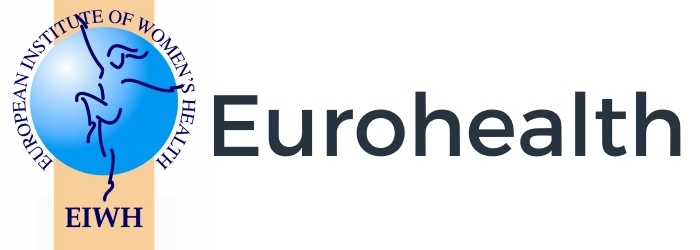Summaries Day 1:
Welcome & Conference Objectives
Peggy Maguire & Hildrun Sundseth, European Institute of Women’s Health
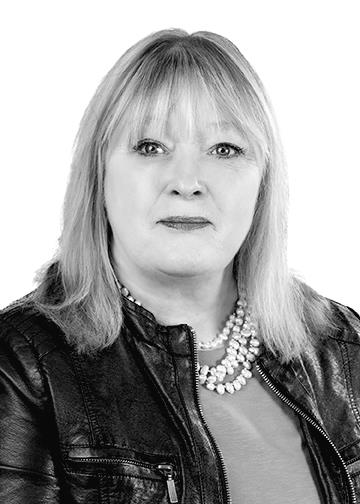

The conference began with Director General of the EIWH, Peggy Maguire, and President of the Board of the EIWH, Hildrun Sundseth, outlining the aims of the conference and the current state of affairs of women’s health.
The purpose of the conference was not only to celebrate the 21st anniversary of the EIWH but also a chance to review the 60 years of gender equality in EU policy since the Treaty of Rome.
The objectives were to examine biological and social factors relevant to sex and gender throughout the lifespan, explore existing gaps, and, through bringing together decision makers and thought leaders, develop a European Action Plan for women’s health and well-being.
This would be achieved over two days by asking the questions:
What progress have we achieved in reducing sex and gender inequities in health over recent decades, and what is the current state of women and family health across Europe?
Where do we want to go in the field of sex and gender equity in health, and how do we advance the women’s health agenda together?
Gender equality in the EU: some reflections on gender and health
Greet Vermeylen Gender Equality Unit, Directorate-general for Justice and Consumers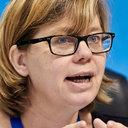
Ms Vermeylen kicked off the expert presentations by outlining how promoting gender equality is a core activity for the EU.
The European Commission’s Strategic engagement for gender equality 2016-2019 prioritises five key areas of action: increasing female labour-market participation and the equal economic independence of women and men; reducing the gender pay, earnings and pension gaps and thus fighting poverty among women; promoting equality between women and men in decision-making; combatting gender-based violence and protecting and supporting victims; and promoting gender equality and women’s rights across the world.
In terms of violence against women, Ms Vermeylen discussed the many forms this can take, and explained the prevalence of these crimes and the serious and lasting impact of violence against women. To stop violence against women, the EU has funded national awareness-raising information and educational activities, as well as funded transnational projects by civil society groups and other stakeholders.
Also, other European umbrella activities currently taking place includes Eurobarometer on gender-based violence, social media campaign, exchanges of good practice and mainstreaming in other policy areas.
Ms Vermeylen then examined the topic of the care- burden of women, specifically in terms of working parents and carers. As one of the first actions under the European Social Pillar, a series of legislative and non-legislative measures have taken place, as well as a proposal for a Directive on leave and flexible working arrangements throughout the life course for working parents and carers, which includes encouraging both partners to take part in caring responsibilities.
Men devote more time to paid work, yet women work more hours than men – on average, 21 of those hours are spent on caring and household activities, compared to a mere nine hours spent by men.
Creating a successful work-life balance necessitates a mix of policies and legislation, as well as financial support; for example, legislating for flexible working arrangements of parental leave directives, and policy pressure for country-specific recommendations on female employment, and financing projects on closing gender gaps.
This all mirrors the Beijing Platform for action, Ms Vermeylen concluded, which focuses on women’s health issues such as women’s access throughout the life course to appropriate, affordable and high-quality health care, gender-sensitive initiatives to tackle sexual diseases and reproductive health, prevention programmes, research on women’s health, as well as integrated measures to prevent and eliminate violence against women and study causes and effectiveness of preventative measures.
Gender equality: moving at a snail’s pace
Dr Marre Karu European Institute for Gender Equality 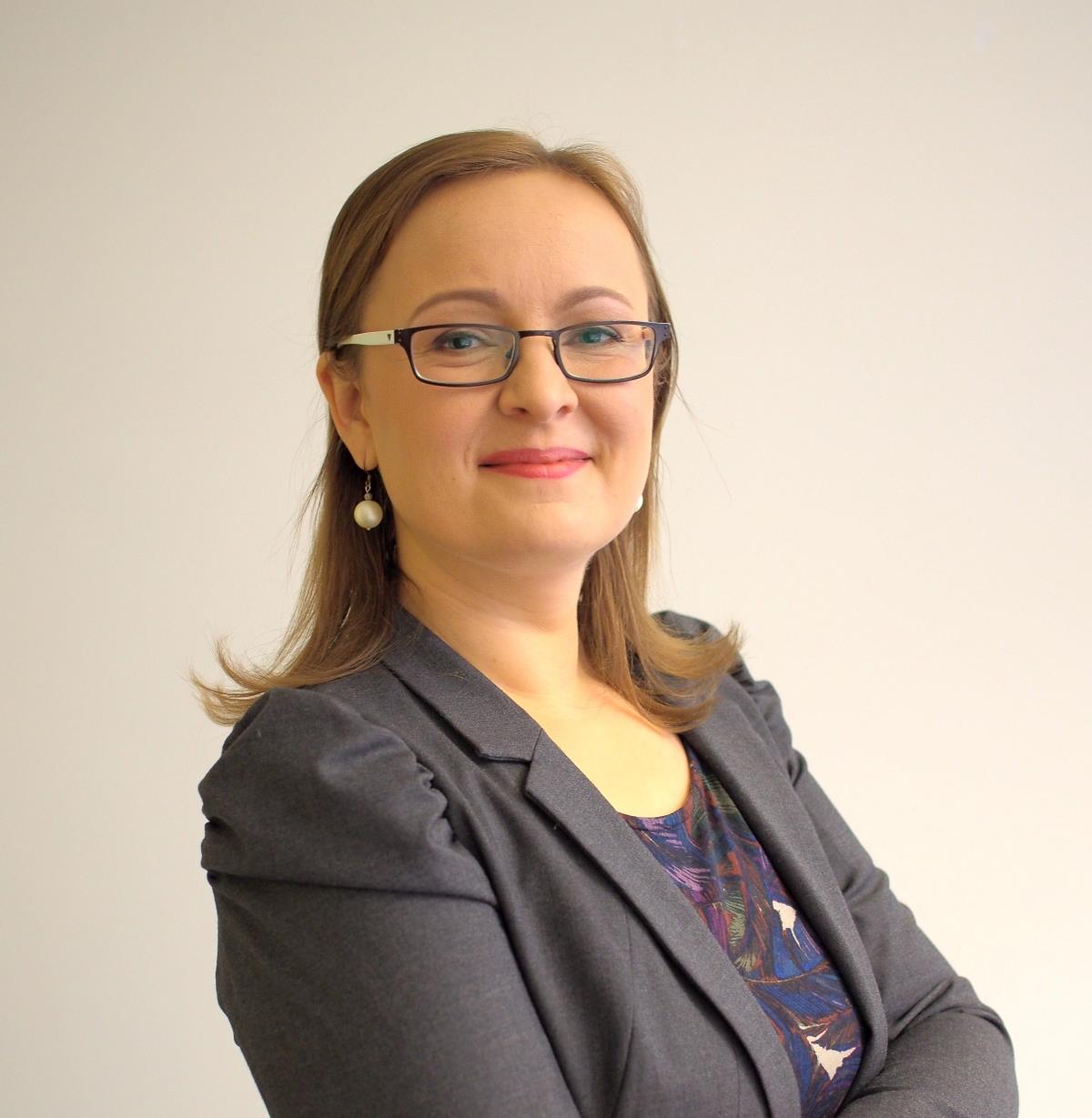
Dr Karu introduced the audience to the Gender Equality Index, which is adapted to the context of the EU and is based on EU policy priorities. The Index is made up of six parts which measure gender equality in the following areas for each MS: work, money, health, power, time, and knowledge.
In 2017, the top three countries in the Gender Index were Sweden, followed by Denmark and Finland, with Greece having the lowest points followed by Hungary and Slovakia.
In terms of “Power”, gender-equality in decision-making is slowly but steadily improving, with legislative quotas aiding the progress in political decision-making, while progress is most pronounced on corporate boards. Men, however, still make the decisions in terms of research funding, media and sports.
For the Health part, Dr Karu explained that gender inequalities are an increasing challenge as societies age; low education means poorer health, and this is especially the case for women. Also, medical and dental care needs of lone mother’s and people with disabilities are often unmet.
For Knowledge, educational attainment is improving but gender segregation persists; for example, there is a decreasing interest among men in studying education, health and welfare. Also, young men are losing out on educational attainment.
As regards Time, women spend more time on cooking and housework than men, and also care for children, older persons and the disabled. Men have more time than women to spend on sporting, cultural or leisure activities. The unpaid care burden is especially high among women born outside the EU.
In the Money area of measurement, having children is a financial penalty for women but an earnings boost for men, and poverty reduction remains a challenge. For those born outside the EU the risk is more than double, and, as Dr Karu explained, lifetime inequalities lead to acute gender gaps in older age, with women more at risk than men.
Dr Karu closed by concluding that while political pressure and legislative actions speed up progress and improve gender balance in decision-making, the overall progress in gender equality is going at a snail’s pace. Of all the issues, unequal sharing of time for caring duties has proven to be the most resistant to change.
Finally, Dr Karu emphasised that by implementing gender and intersectional perspectives, more equitable and effective policies can be developed.
Panel: Right from the start: Early intervention in maternal and child health
Co-chairs: Professor Alexandra Kautzky-Willer and Hildrun Sundseth
Diabesity and pregnancy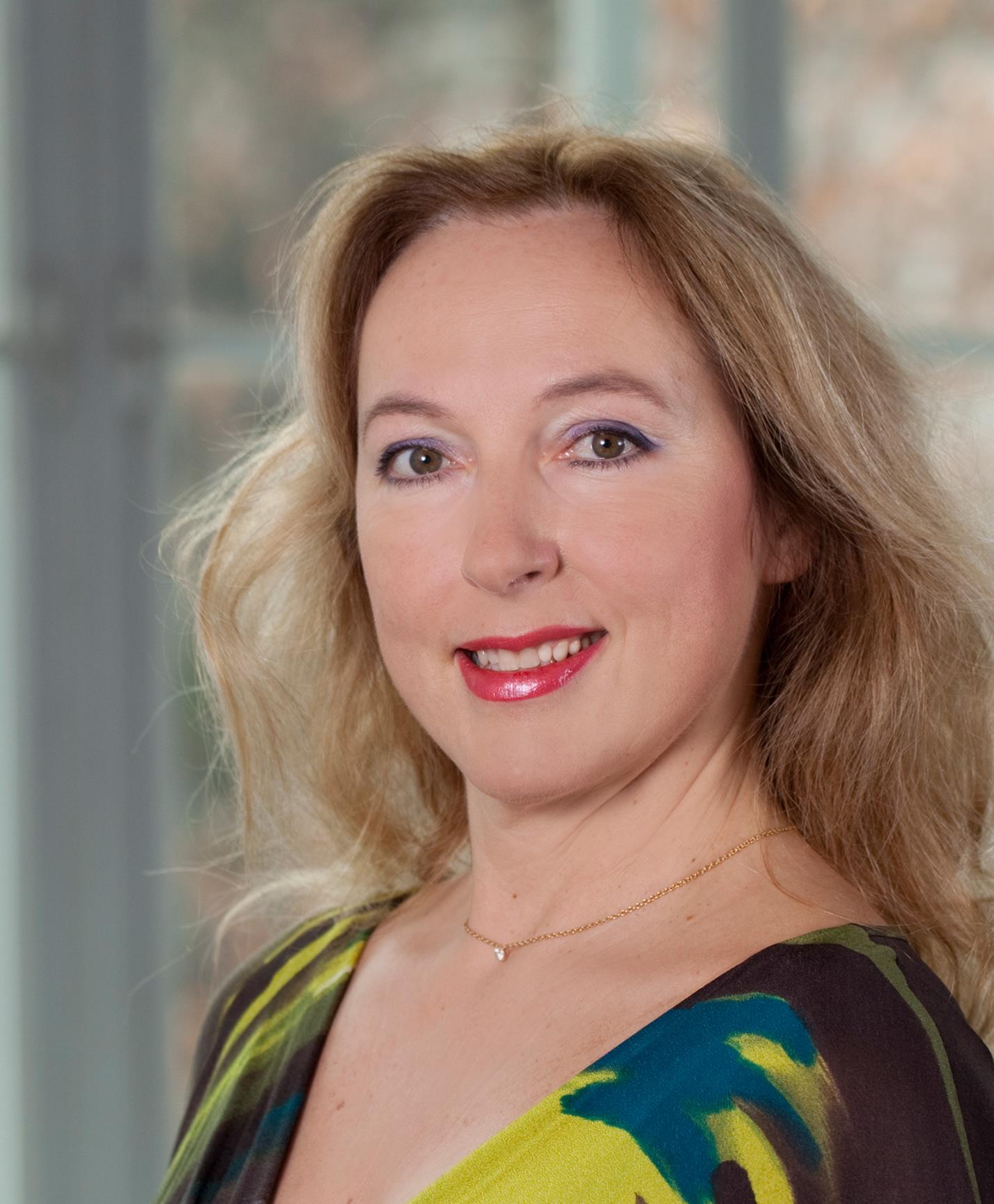

Professor Kautzky-Willer began by introducing the concept of “diabesity”, the combination of diabetes and obesity, with a specific focus on pregnancy
“Diabesity” is a worldwide and European epidemic, and apart from biological sex, matters such as psychosocial, socioeconomic, and environmental issues have a big impact on health and development of diseases like type 2 diabetes and cardiovascular disease.
Pregnancy is very important for health, for the mother but also the offspring in terms of epigenetic effect, and there is a lifelong interaction between the environment and biology.
Women have specific risks and challenges, because of pregnancy but also for example if a woman has diabetes the risk of cardiovascular diseases is much higher than in men with the same health issues.
This is why the International Diabetes Federation used the 2017 World Diabetes Day to focus on women and diabetes – for example, 200 million women live with diabetes; 1 out of 7 births is affected by diabetes; and 16 per cent of pregnancies have hyperglycaemia, and most of that is down to gestational diabetes.
Between 10-30 per cent of pregnancies are in obese women across Europe, and this is increasing.
Obesity makes women four times more likely to develop gestational diabetes, and extreme obesity makes gestational diabetes nearly nine times more likely and may lead to many other health issues, for example pre-eclampsia.
Professor Kautzky-Willer then discussed the issue of in utero programming; if we change the health of the woman we can change the health of the next generation. For example, placental dysfunction due to diabetes/obesity will have an effect on the neonate and the postnatal period will lead to cardiovascular changes, and if it is a girl she is more likely to develop metabolic syndrome – a vicious intergenerational circle has begun.
Another problem for women with gestational diabetes is the very high risk of developing glucose abnormalities after giving birth. Diabetes in these women could be prevented by lifestyle modifications and medication.
Also, the higher the maternal blood glucose in the third trimester, the higher the risk that the offspring will have abnormal glucose tolerance and higher blood pressure at age seven.
To tackle all these issues, professor Kautzky-Willer stressed that prevention is possible but important areas to focus on are breastfeeding, normal weight or reduction of weight of overweight/obese women, no smoking, healthy lifestyle, as well as medication. This will also help prevent cardiovascular disease.
A perspective from regulators
Professor Corinne de Vries European Medicines Agency
The vast majority of women use medicines in pregnancy. This is done for a number of reasons – many of the medications are off-patent or over the counter products, and taking them can be either unintended, intended for the mother, or intended for the offspring, and many may be safe in pregnancy and lactation.
However, a lot of uncertainty around pregnant women taking medication exists, and principles of risk management need to be implemented, for example, routine risk and minimisation and pharmacovigilance, and this needs to be risk proportionate.
Professor de Vries then outlined the central issues. Animal models are poor predictors both for human toxicity and breastfeeding, and pregnant women are usually excluded from pre-authorisation clinical trials; however, improvements in this area are possible.
Also, to ensure post-authorisation risk management in pregnancy and breastfeeding, specialised methods and innovative approaches are required.
Recommendations to improve risk management include creating an infrastructure for medicines safety in pregnancy and lactation evaluation, which would help defragment and consolidate knowledge.
A separate funding structure may be necessary to achieve this.
Also, risk management strategies for medicines in pregnancies should be done as a continuum for all medicinal products, towards all pregnancy interventions.
This should all be done using appropriate 21st-century technologies.
Maternal obesity in Europe: where do we stand and how to move forward?
Professor Dr Roland Devlieger UZ Leuven;
European Board and College of Obstetrics and Gynaecology
Professor Devlieger began by outlining the distribution of maternal obesity, which in Europe ranges from 25 per cent in the UK to seven per cent in Poland.
Obesity is related to a number of complications in pregnancy, such as difficulty to conceive and increased miscarriage risk, foetal malformations, and abnormal foetal growth. Throughout the pregnancy, issues persist, such as gestational diabetes, hypertensive disorders, respiratory problems, increased risk of infections, and increased risk of depression.
Labour and delivery are also more complicated for the obese mother – there is an increased risk of induction of labour, instrumental delivery or Caesarean section, increased risk for anaesthetic complications, intrapartum monitoring difficulties and a higher risk of birth trauma.
In the postpartum period, there is an increased risk of thrombosis, wound infection, weight retention, and of getting type 2 diabetes, as well as decreased breastfeeding levels.
Finally, in the child, there is an increased risk of childhood obesity which in turn leads to an increased risk of metabolic syndrome in adulthood.
Professor Devlieger explained some of the central issues in maternal obesity, such as lack of uniformity in weight gain recommendations, lack in uniformity in screening for gestational diabetes, lack of knowledge on effective strategies to prevent maternal obesity and its complications, and lack of attention for family-centred care and psycho-social factors.
In order to rectify this, professor Devlieger suggested that pregnancy and related health issues should be put higher on the research agenda, with an integrated and uniform approach for the management of obesity of women in reproductive age who are planning a pregnancy.
This management should begin before conception, and continue through the postpartum period and focus on mental well-being, healthy eating and physical activity.
Maternal obesity is not just a personal responsibility, but also a societal, environmental, political and economic responsibility.
Maternal vaccination against early childhood diseases
Dr Nico Hartwig European Academy of Pediatrics
Dr Hartwig opened with an overview of the success of vaccination – it is one of the greatest achievements of medicine, and it has contributed to decreases in childhood mortality, with 2-3 million deaths avoided each year. He also highlighted the cost-effective nature of vaccination as a health intervention.
However, despite all this success, children under three months old are still at risk of serious illnesses, for example, whooping cough. This is caused by low level of maternal protection that is transferred to the infant, providing it with low levels of protection which cannot always resist e.g. a whooping cough infection. However, this issue can be averted in a simple way – vaccination. By the pregnant mother getting the pertussis vaccination, her antibodies become much higher with the result that the levels of maternal protection transferred to the infant is much higher, helping the immune system fight against pertussis.
Dr Hartwig then moved on to discuss what the main issues are in improving vaccination levels for pregnant women; what is the best way of reaching all pregnant women for counselling and perinatal care? How can we persuade pregnant women to get vaccinated and thereby protect their new-born child? How can we ensure that midwives, family doctors and other health care professionals have all the necessary knowledge on maternal vaccination? How can we implement maternal vaccination at acceptable costs?
Dr Hartwig closed by recommending the integration of primary care such as family healthcare, primary paediatric care and perinatal care in order to improve vaccination rates, ensuring free access to primary healthcare to all pregnant women, and actions to improve the knowledge on immunisation for health care workers not usually involved in vaccinationstrategies.
https://www.youtube.com/watch? v=S3oZrMGDMMw
The importance of women’s health internationally
Madi Sharma, European Economic and Social Committee 
Ms Sharma began by introducing the European Economic and Social Committee, which is the house of civil society – employers, trade unions, small businesses, and most organisations representing grassroots level.
She then outlined why women’s health was of such importance on both on a personal and professional level. Within the EESC, Ms Sharma described her role as that of representing both women and diversity, and as she is one of the very few members who is still involved in running her own business, she knows the challenges that face women. She is also a survivor of domestic violence, who decided after one of many beatings that she could either be a victim for life, or be a change-maker. The opportunity to work in the EESC has given access to many opportunities, and Ms Sharma explained the privilege and responsibility she feels to speak out for those less fortunate as a result.
One of the areas where she sees women suffer the most is health, in terms of healthcare access, reproductive rights, mental health, and especially domestic violence.
Also, she elaborated on the importance of changing stereotypes of how young girls and women are treated, and that this is important throughout the life-course – the life-course approach is crucial.
She also encouraged the conference participants to share as much as possible with the EESC, and with a wider audience not just in Europe but also around the world – women’s health is an issue everywhere.
In conclusion, Ms Sharma said that if you are not sitting around the table, you’re on the menu, so inputting into policy and advocating for change is vital and together we can achieve that change.
Panel: A life-course approach to the health in women and families
Co-chairs: Peggy Maguire and Kristin Semancik, EIWH


Ms Maguire introduced the issue of inequalities by stressing the fact that most of the factors that impact health and increase inequalities lie outside the health sector and include most policy areas; socioeconomic, environment, education, housing, employment.
Ms Semancik then gave an overview of the EIWH’s policy briefs, pre-ambling this by pointing out that women’s health is more than reproductive health, but is health across the lifespan. Incidence and prevalence of certain diseases are higher among women and affect men and women differently.
Women outlive men but the key difference is that healthy life expectancy is only 18 months.
Research, practice, programming and healthcare systems must better respond to sex and gender differences to address this.
The EIWH policy briefs are focusing on such issues and are incorporating the UN Sustainable Development Goals (SDGS) of good health and wellbeing, gender equality, and reducing inequalities. Health behaviours, for example smoking and alcohol, are different between men and women, biologically but also in terms of behaviour and marketing practice.
Also, nutrition and exercise are both major issues for all stages of the life course.
Ms Semancik also spoke about sex and gender issues in chronic diseases and cancer, as well as menstruation and the effect it has on a woman’s wellbeing and health.
Panel: A life-course approach to the health in women and families
Dr Isabel de la Mata, DG Santé 
Ms de la Mata began by explaining that the European Commission does not specifically focus on women’s health as they do not address particular groups, but instead take into account gender issues horizontally, in all aspects of policies, programmes and research.
As an example, Ms de la Mata described how the Steering Group on Prevention has approved a selection of criteria to achieve best practices to achieve nine targets in non-communicable diseases, and that gender perspective needs to be assessed for each practice received.
She also spoke about the recently finalised GenCat project, a project on gender-specificities on coronary artery disease. The use of this particular chronic disease was important as the European Commission wanted to show that everything is different – prevention, presentation, diagnosis, treatment, rehabilitation – in women and men for this disease, and this needs to be taken into account for all diseases, especially for chronic diseases.
The approach should be to move from what we were saying 20 years ago, that the main factor of health inequalities is gender, to demonstrate how we need to tackle that throughout the disease trajectory.
Ms de la Mata described working for the last two years in refugee and migrant health where they were advocating for culturally and migrant-sensitive health systems – the same must be done for a gender-sensitive health system, and this should be taken into account in the way we respond to different populations. The specificities of men and women have to be acknowledged, not only biological aspects but behavioural and social aspects that are different and need to be addressed.
Other European Commission current project focus on mental health/mental health literacy which includes a gender approach, and initiatives on breast cancer and colorectal cancer.
One main area is vaccine-preventable diseases, and here the role of women is very important. This is the case not only during pregnancy when vaccine status should be checked routinely which many women, as well as healthcare professionals, are not aware of; but also, women tend to be responsible for their babies’ health and we need to start with that and continue with good vaccination practices throughout the life course.
Ms de la Mata concluded by saying that this is not only the main initiative, but also the only initiative which is in the Commission’s Programme for 2018, and was mentioned in the State of the Union speech by President Juncker
Cervical cancer prevention: a matter of equity
Professor Marc Bardou, University Hospital Dijon-Bourgogne, INSERM 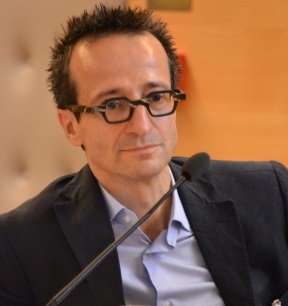
Professor Bardou introduced the topic of cervical cancer in Europe. While it is not the most prevalent cancer in Europe, it has a particular aspect, first of all because there is a huge inequality between the incidence rates and mortality rates of cervical cancer in women in Europe. However, there are also large inequalities within high-income countries in Europe.
There exists a 20 percent difference in five-year mortality for cervical cancer between the best and the worst European country. In terms of within the country, professor Bardou used French data to show that women who live in the most deprived areas of France have a 1.6 ratio of experiencing cervical cancer.
Equally worrying is the figure that women who live in the most deprived areas of France have a 0.6 ratio of going for cervical cancer screening, even though the screening is free of charge. Women from lower socioeconomic backgrounds as well as those who live in deprivation are thus especially affected by cervical cancer, as are minorities.
Professor Bardou continued by asking, what are the recommendations to do something about this?
By actively promoting cervical cancer screening there might be a decrease in the number of expected cases, and by increasing the coverage of HPV vaccination you can also have a very significant prevention of cervical cancer.
Nevertheless, even in high-income countries, 50 percent of cases of cervical cancer are seen in women who do not go to cervical cancer screening, and 17 percent of the mortality is seen in those specific women.
Access to care equality is a very complex issue which cannot be solved with one intervention. There exists a need to build very complex interventions – a programme that has one intervention, needs to also include an additional intervention that can overcome the barrier to screening. Among hard-to- reach women, there are many factors that have to be considered, for example the preference of the patients, and the fact that the intervention must be sustainable.
Professor Bardou closed by saying that we need to go beyond just words – in the 2014-19 Cancer Plan in France, the words ‘reducing health inequality’ were written about 15 times, but with no clues on how to achieve such a goal.
Nutritional issues for Women
Paula Mee, Consultant Dietician 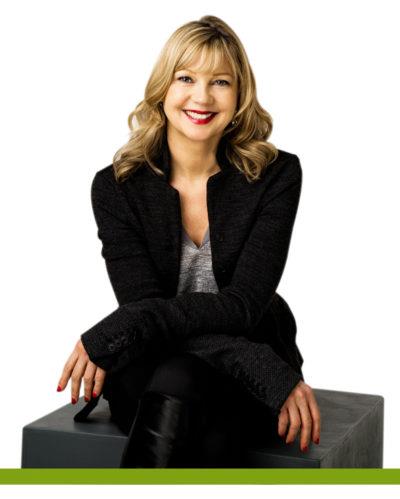
Ms Mee started her presentation by highlighting the role of women, who due to their caring responsibilities, are the gatekeepers’ of the family’s nutrition.
She gave an overview of health issues nutrition can address and that affect public health today, for example non-communicable diseases like cardiovascular disease, diabetes, cancer and respiratory diseases.
The unhealthy diets of today contribute to an overconsumption of energy, saturated fat, trans fat, sugar and salt while at that same time consumption of fruit, vegetable and wholegrain fibres are too low. This creates the double challenge of a person being overweight but also having nutrient deficiencies such as iron, calcium, vitamin D, folic acid and iodine. Children of less educated families are most affected by this double challenge.
In addition, women are not aware that their dietary choices when pregnant can predispose their baby to the likelihood of developing chronic diseases later in life.
The benefits of breastfeeding are not explained well enough and women are not getting enough support to breastfeed, leading to the stalling of exclusive breastfeeding rates in the WHO European region, and inappropriate complementary feeding practices are still common. Micronutrient deficiencies, especially of iodine, iron and vitamin D, are still frequent and especially so among vulnerable populations.
Ms Mee then discussed what can be done to prevent these problems from occurring in the first place.
Her first recommendation was to support vulnerable groups by building resources that enhance food literacy, skills and knowledge, starting with pregnant mothers. We are missing out on platforms to communicate with women about their and their family’s future health, and pregnant women are a very good place to start, as children will benefit throughout their life-course by healthy nutrition.
Also, primary health care professionals need to be trained and improve their capacity of guidance on appropriate nutrition counselling and with monitoring and management.
The promotion and accessibility of a healthy and varied diet which is both available and affordable is a key lever to improve the health, well-being and quality of life, as well as promoting healthy ageing and reduce health inequalities.
Ms Mee finished by stating that a healthy food and drink environment for all should be created by banning trans fats from EU food and strengthening governance, alliances and networks for a health-in-all-policies approach.
Who cares for the carers?
Dr. Paul De Raeve, Secretary General, European Federation of Nurses Associations 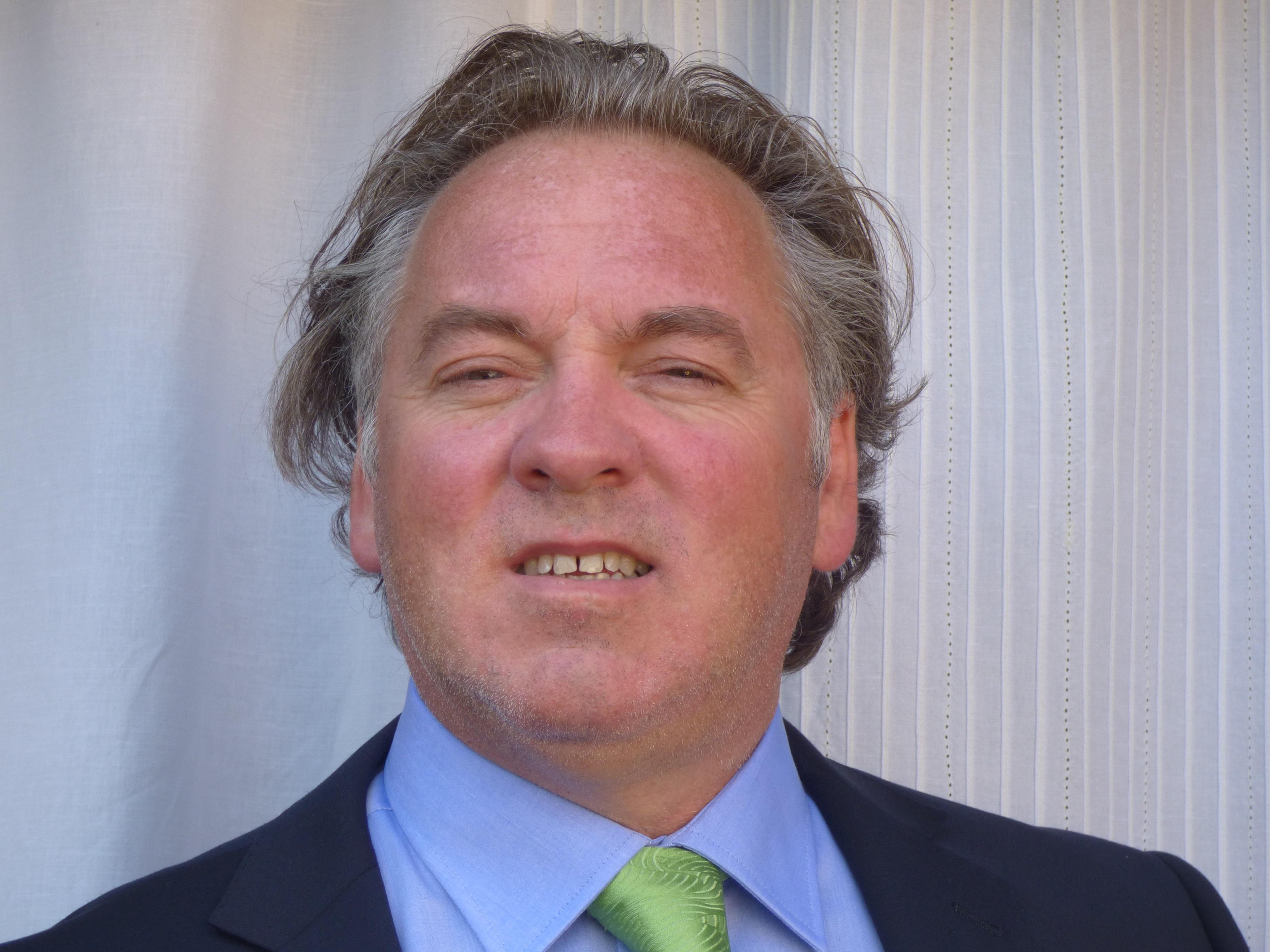
Dr De Raeve began by airing the importance of advocating for frontline support to those who care for those in need of care. In order to achieve frontline change, it is important to reflect on what we are doing, how we are doing it, why we are doing it, and what could civil society as a whole do in order to take a more pro-active role in EU policy creating to make it all happen, to close the existing EU implementation gap! We have enough Council conclusions, we need action and support!
There are three million women in nursing in the EU, six million in the European region, and 16 million women in nursing globally. We need more! 9 million! The nursing care pathway is a circle that starts with essential observations, nurses reporting their observations and communicate in team, ensuring better health outcomes are achieved. However, if the nurse at the frontline cannot fulfil this task we have a major problem in coordinating care.
30 years ago, approximately 45 percent of a nurse’s time was dedicated to direct patient care, today it is 31 percent. Remaining time is dedicated to collecting data, in order to evaluate indicators, plan clinical pathways, and evaluate the healthcare outcomes. So, we need more highly qualified nurses’ frontline! However, the pressure on nurses today comes from data collection not being the right data, creating mainframes full of data, not even been used to improve processes and outcomes. The frontline nurses need to be more supported in order to do all the data collection needed and care for the patients at the same time.
Nurses also very often find themselves as informal carers – Dr De Raeve used the example of nurses who leave their job in order to become a full-time informal carer. This is expected of them, by their families partly because of their nursing knowledge and also because they are women. This leads to many nurses not having a proper pension to live from when they reach retirement age, leaving them at risk of poverty.
Finally, he spoke about nurses as patients. Nurses are exposed to many health hazards, from sharp injuries to more long-term health issues such as exposure to hazardous medication. These terrible working conditions, Dr Raeve stressed, need to be included in the Action Plan from the conference, as women do not need to be confronted with violence or hazardous drugs when doing their job.
He concluded by saying that action plans, roadmaps, or joint statements are only as good as what they engage women, engage frontline, so it is imperative that the EIWH Action Plan looks at deployment, implementation, and getting things done, by women and for women. By thinking less disease- specific and with a more generic view towards the overall picture, we will all benefit from this, if not, we stay in our well- known silos.
Active and healthy ageing panel: Promoting brain health and combating cancer
Co-chairs: Dr Mercè Boada, Institut Català de Neurociències Aplicades, and
Maeve Cusack, Cancer Control Unit, Health Service Executive Ireland

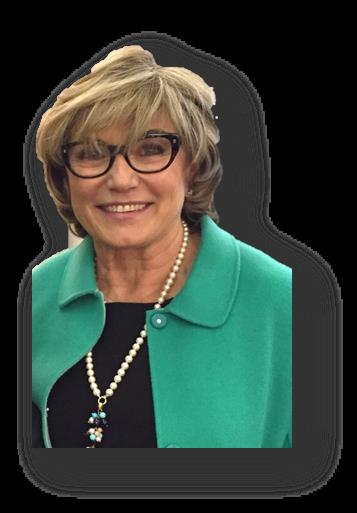
Ms Cusack described the challenges that are involved in active and healthy ageing, from demographic changes to changes and advances in technology.
She also stressed the importance of how we engage with various populations – what is the message we send to various groups, such as young people or older people? It is often said that at the centre of all care is the patient and the patient’s pathway to care; Ms Cusack summed up by suggesting that it can be said that at the centre of all this is the woman, in terms of caring responsibilities, both formal and informal.
Dr Boada spoke about the issue of Alzheimer’s Disease and the specific challenges it poses for carers. Alzheimer’s Disease is different from cancer, where after a diagnosis you generally chose a course of immediate response.
With Alzheimer’s Disease, the trajectory is slow and subtle; active medical action is not taken to the same extent.
Rather, Dr Boada argued, after a diagnosis of Alzheimer’s Disease or at the beginning of the illness, the most important issues are education, information and awareness, both for the person with the illness and for the carer. The carer will have to absorb the fact that the illness appears step by step, and education, information and awareness are the best ways of facilitating this process.
Palliative care, while appropriate for Alzheimer’s Disease, is not yet relevant at this early stage and instead this time should be devoted to the person and the carer/family, and the social frustration, social isolation and poverty that can accompany a diagnosis of Alzheimer’s Disease.
Carers therefore need maximum help to prepare for the course of the disease and what lies ahead.
Dr Boada finished by again highlighting the importance of education, information and awareness in relation to Alzheimer’s Disease, both for the sake of the person with the illness but also the carer at the beginning of the illness.
Active and healthy aging panel: Promoting brain health and combating cancer
Alojz Peterle, MEPs Against Cancer and MEP, Slovenia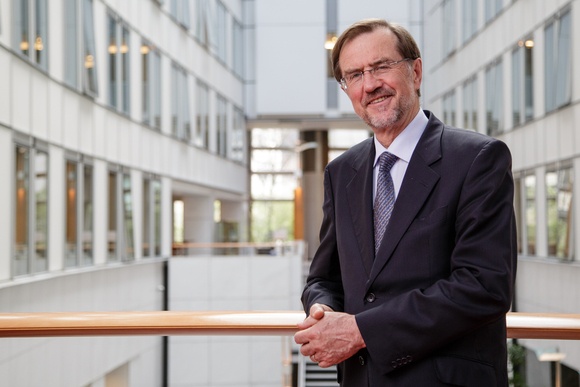
Mr Peterle spoke about the demographic change in Europe, where rising life expectancy, changing fertility rates and complex migration patterns mean that while the size of the population remains stable the population pattern is changed.
An ageing society is both a challenge and an opportunity – increased longevity is one of the most remarkable achievements of our age, but we need to make sure it is a blessing and not a curse.
Awareness must be made that Europe has the highest number of older women in the world, but that despite women’s increased life span their older years are disproportionally burdened by ill health. Spending more years in ill health and/or disability not only affects quality of life but also puts pressure on public health and care services.
While health care is a national competency, this should not prevent Member States from working together towards better coordination and support in addressing health challenges.
This is also the case for cancer – Mr Peterle made the point that as an elected representative of the public, he believes that when it comes to dealing with cancer the utmost attention must be paid to patients and their families.
The patient perspective is not complementary to clinical data but is a prerequisite to any modern program in healthcare, and cancer patients need standardised integrated high-quality health care with a patient-centred approach.
Speaking about his own experience as a cancer patient, Mr Peterle said he was lucky because he had a very professional and ethical oncologist, who enabled Mr Peterle to choose what was best for him.
From a societal perspective, policy makers should address and facilitate equitable access to appropriate treatment and supportive therapies for cancer patients in all Member States.
The response to demographic change requires a paradigm shift and at the heart of this new paradigm should be the regular practice of working together, and health care and social care systems need to evolve in order to continue providing care to the ageing population.
Various levels of governments and people and organisations can play a significant role in creating the conditions that support an individual in adopting active lifestyles, and we must not forget the role of primary prevention and health promotion here.
Mr Peterle concluded by stating that active and healthy ageing is not a political issue, but rather it should be our common cultural and social project.
Right from the start
Dr Nicoletta Iacobacci, The Women’s Brain Project

Dr Iacobacci introduced her presentation with the question where do we stand on ageing and women’s health in general when we consider emerging technologies?
Using mental illness as an example, we know that artificial intelligence (AI) can spot changes in the brain indicative of Alzheimer’s disease almost a decade before symptoms appear. This is done through non-invasive MRI scans that identify alterations in how regions of the brain are connected.
While there is no cure for Alzheimer’s disease, which is the most common form of dementia, the drugs that do exist are likely to work better the earlier they are given. An early diagnosis can also allow people to make lifestyle changes that may help slow down the progression of the disease.
Dr Iacobacci then discussed the issue of robots assisting older people, and robots being more present in day-to-day life in general. This will have a profound impact on our lives and our development both as humans and as a society.
With this in mind, can AI, robots and machine learning help us reduce sex and gender inequalities in women’s health?
The answer, Dr Iacobacci ensured us, is yes – however the challenge is that the majority of innovators of these products are men, and most likely AI and machine learning are already biased.
Dr Iaccobacci explained that through her work she intends to demonstrate that the male and female brain and illnesses are not the same for both sexes, and to highlight the importance of gender and sex bias in technology will be addressed now, and not after the technology is well defined, as is normally the case.
This, she says, can be done through among other things empowering women within technology, and including brain diseases on the European agenda for women’s health.
Promoting Cancer Prevention
Dr Wendy Yared, Director, Association of European Cancer Leagues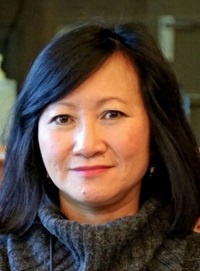
Dr Yared outlined the situation for women in the EU regarding cancer, with Hungary and Denmark having the highest standardised death rates for cancer among women. The main fatal cancer for women in Europe is breast cancer, whereas it is lung cancer for men.
In order to change these numbers, the European Code Against Cancer focuses on actions that individual citizens can take; nevertheless, Dr Yared argued, these actions must be supported by governmental policies and actions. Actions include not smoking, having a healthy body weight, being physically active, having a healthy diet, avoiding too much sun, and avoiding cancer-causing substances.
For women specifically, Dr Yared discussed actions such as breastfeeding, which reduces the risk of cancer; limiting the use of hormone replacement therapy (HRT) as it increases the risk of certain cancers, and take part in screening programmes for breast cancer and cervical cancer.
Dr Yared explained in detail the issue of HRT – it increases the risk of cancers of the breast, endometrium and ovary, and it also contributes to several non-cancer adverse health outcomes.
Risks, however, start declining shortly after treatment stops so if it is necessary, treatment should be taken the shortest time and at the lowest dose possible to control the symptoms of menopause.
Dr Yared closed by again emphasising the importance of governmental support behind messages coming out regarding cancer/health promotion, to ensure that citizens engage.
Promoting the needs and added value of informal carers at EU level
Stecy Yghemonos, Executive Director, Eurocarers –
European Association Working for Carers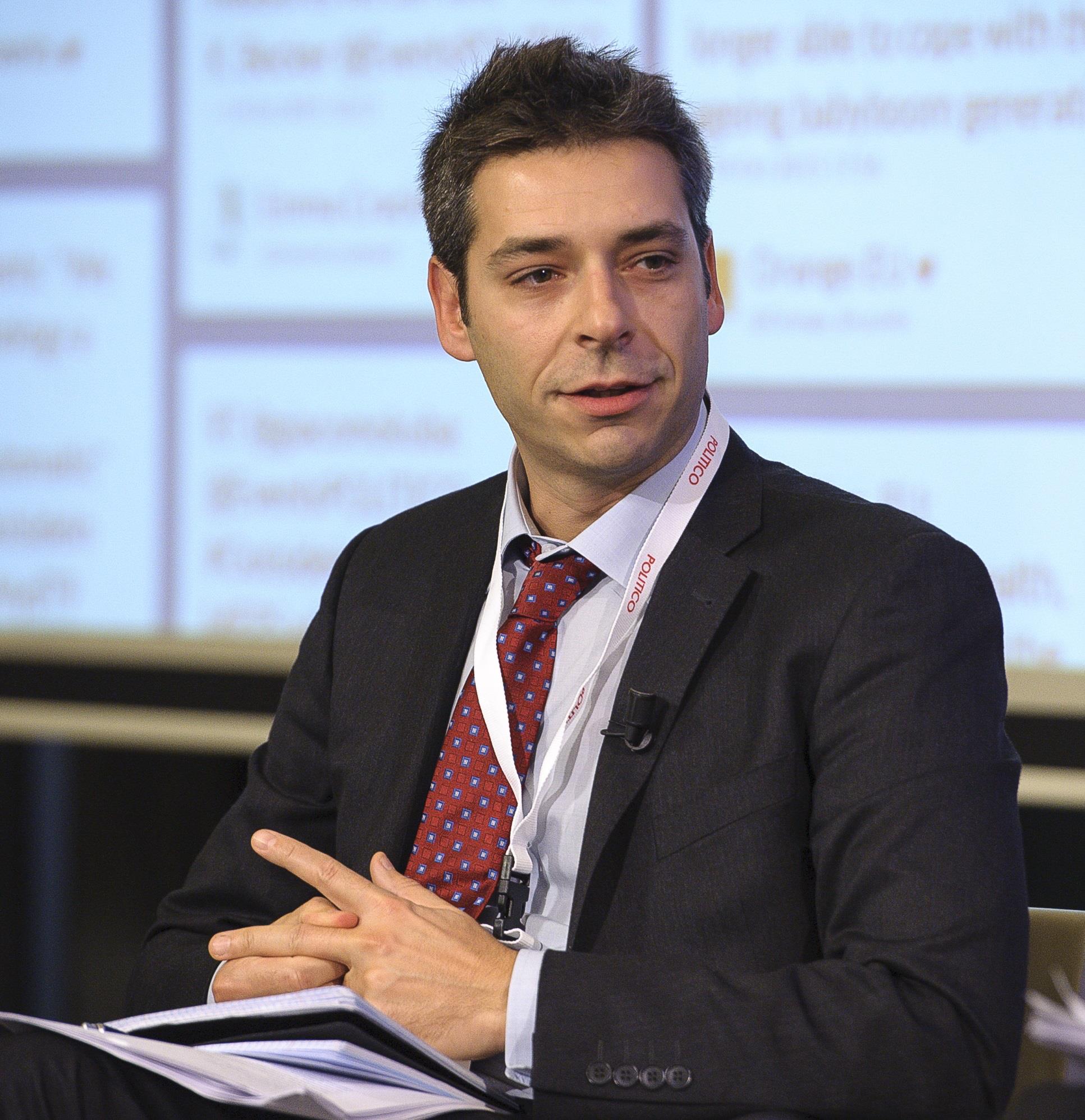
Mr Yghemonos began by introducing his organisation, and then explored the situation of carers in Europe. The personal is political, he explained, as across Europe unpaid family and friends are the largest providers of health and social care support.
The demographic change has increased demand and the balance of care increasingly shifted to informal care, with women being disproportionally affected by this as they are more likely to give up employment to care. The value of informal care in economic terms is very large – in the UK the contributions made by carers is €140 billion per year.
Across the EU, carers are an indispensable component of the health and social care system, without whom formal care provision would simply be unsustainable and grind to a halt.
This will be even more the case in the future, due to the growing care needs of an ageing population and increased prevalence of frailty and chronic diseases.
Nevertheless, informal care is under pressure from demographic and socio-economic developments, such as smaller families, greater physical distance between relatives, rising numbers of women entering the labour market and a prolonged working life.
When not adequately supported, caring responsibilities also affect the work-life/care balance and employment, contributes to social exclusion and poverty, and has a negative impact on health and wellbeing.
Caring responsibilities are one of the main reasons why women do not participate in the labour market in the EU, as they cut down work hours or stop working in order to look after children or incapacitated relatives.
Mr Yghemonos explained that carers can be helped through various forms of support, for example financial support in the shape of an income based on a minimum wage; employers providing flexible working schedule and paid and/or unpaid leave; pension credits for care time; regular breaks from caring; and training. Resolute investment in community-based long-term care systems should be encouraged and sustained to provide carers (and users) with alternative solutions to informal care, therefore providing them with a proper choice.
In summary, Mr Yghemonos highlighted the need to continue raising awareness of the significant contribution made by carers to our welfare systems and the economy, to further develop supports services for carers and enable them to remain in paid employment, and to ensure that EU and national policies take carers into account and ensure both carers and patients have access to quality, flexible and accessible formal long- term care.
Day One Closing: The state of play of women’s health in Europe
Isabel Yordi, World Health Organisation Europe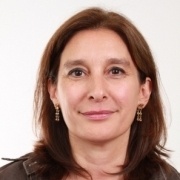
Ms Yordi began by highlighting the 2016 WHO publication Global Strategy for Women’s Health. There are a lot of barriers to gender equality that are politically driven – issues regarding gender-based medicine are well-known at this stage but not enough attention is given to why gender barriers, bias and discrimination still exist in our region.
Many countries are in fact moving backwards on these issues, not just in the WHO European region but also within the European Union, and this is crucial to address.
Women’s health is not just maternal, sexual and reproductive health, and sexual and reproductive health is not just for women but also for men. Gender equality is not about the equality of dying at the same time of the same diseases, but rather right of access, discrimination in the health care sector, and so on.
In terms of the life-course approach, the starting point for women’s health should not be at pregnancy, but before that, including family planning and issues that come before pregnancy, as well as it being a wanted pregnancy.
In terms of gender equality, Ms Yordi described two parallel discussions occurring – one focusing on issues like cancer, cardiovascular disease, and carer burden, and one looking at social determinants of health, and it seems like these two never meet.
There is no regular addressing of social determinants of health – the intersections of such barriers must be addressed in a more systematic way. The WHO attempted to do this with the Strategy on Women’s Health, and to ask the question why is women’s health still a political issue?
Ms Yordi raised the issue of discriminatory norms and values that are still in existence in every European country, also in the more western countries.
She also highlighted the fact that although health care is a feminised sector it is that only in volume but not in terms of responsibility or management – it is still men that are running the health care sector. The WHO does not have the same strength that the EU has regarding legislation as it can only issue recommendations, but are trying to be transformative in their strategic thinking.
Ms Yordi wrapped up by detailing the WHO’s next strategy, which will be on men’s health. One of the big gaps that still exists is engaging men in gender equality – it is very difficult to change roles and expectations if men are not involved.
